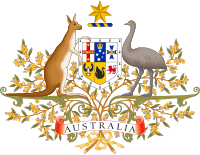
Photo from wikipedia
Abstract Tree health is a major concern for forest managers as well as others who enjoy the benefits of trees, woods and forests. We know that stakeholder engagement can help… Click to show full abstract
Abstract Tree health is a major concern for forest managers as well as others who enjoy the benefits of trees, woods and forests. We know that stakeholder engagement can help define what people find important about forests and woodlands, assist in the development of better management approaches, enhance buy-in of strategies proposed and create a stronger democratic dialogue. However, tree health offers particular challenges for stakeholder engagement because of the wide range of stakeholders potentially involved and budget tightening under economic austerity. Stakeholders are present at different spatial scales (local, place specific; regional; national and international) and need to be engaged cyclically and over different temporal scales, sometimes in immediate decision making but also in planning over longer timescales, for which decisions have implications for woodlands in the long term future. Hence, we need to know not only with whom we could engage, but also with whom we must engage. Our research questions are: with whom, why and how should we engage across spatial, temporal and governance scales and with limited resources to achieve philosophical and practical goals regarding tree health? How do we prioritise engagement efforts to obtain ‘best value’? We undertook two tree health projects, both using and investigating the concept of ‘stakeholder engagement’ in the UK: (1) exploring the concept of resilience with tree health stakeholders; (2) exploring how stakeholder engagement could enhance technology development for the early detection of tree pests and pathogens. We carried out interviews and experiential interactive activities and ran workshops and collaborative field trips with a range of stakeholders. We found that mapping stakeholders identified a complex network of hybrid individuals and roles overlaid on a projectscape that spanned multiple research and practice initiatives. It was clear that as well as undertaking discrete engagement activities, it was important to develop ongoing collaborative conversations, facilitated through networks and alliances. Stakeholder engagement was more effective when interactive, innovative or experiential means were employed. There was a tension between recognition of the value of communication and the time and resources required for engagement. Whilst the state is attempting to devolve responsibility, structural constraints, resource restrictions and knowledge gaps are limiting the capacity of others to fulfil these expectations. It was concluded that, despite economic austerity, investment is required to support relationships and networks, promoting normative and substantive forms of engagement and countering the audit culture, rather than focusing merely on instrumental, easily measurable, short term gains.
Journal Title: Forest Ecology and Management
Year Published: 2018
Link to full text (if available)
Share on Social Media: Sign Up to like & get
recommendations!